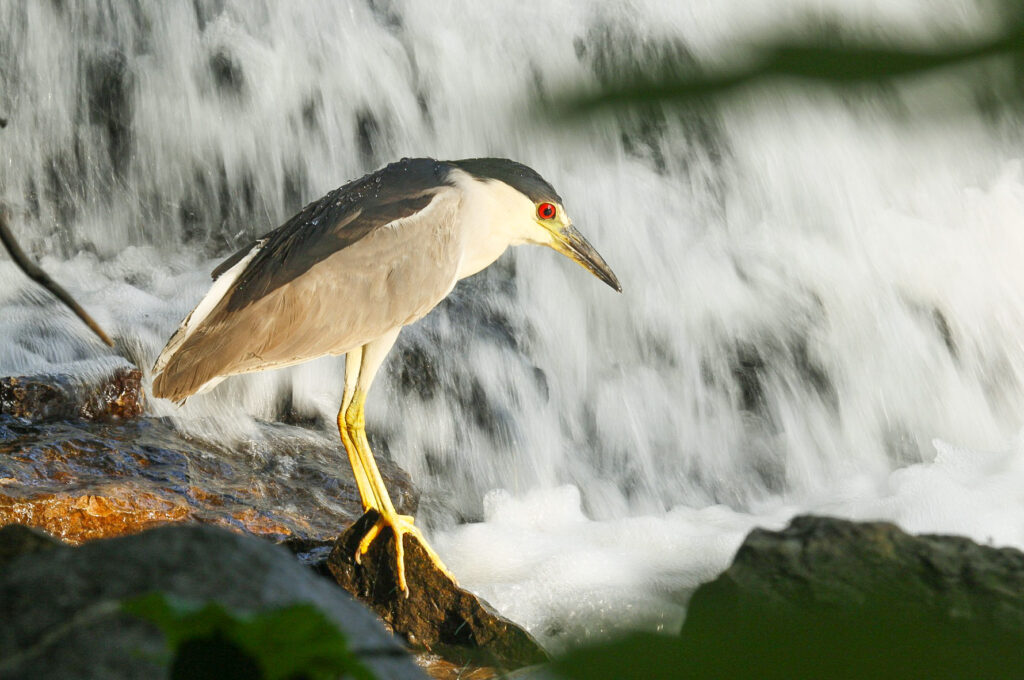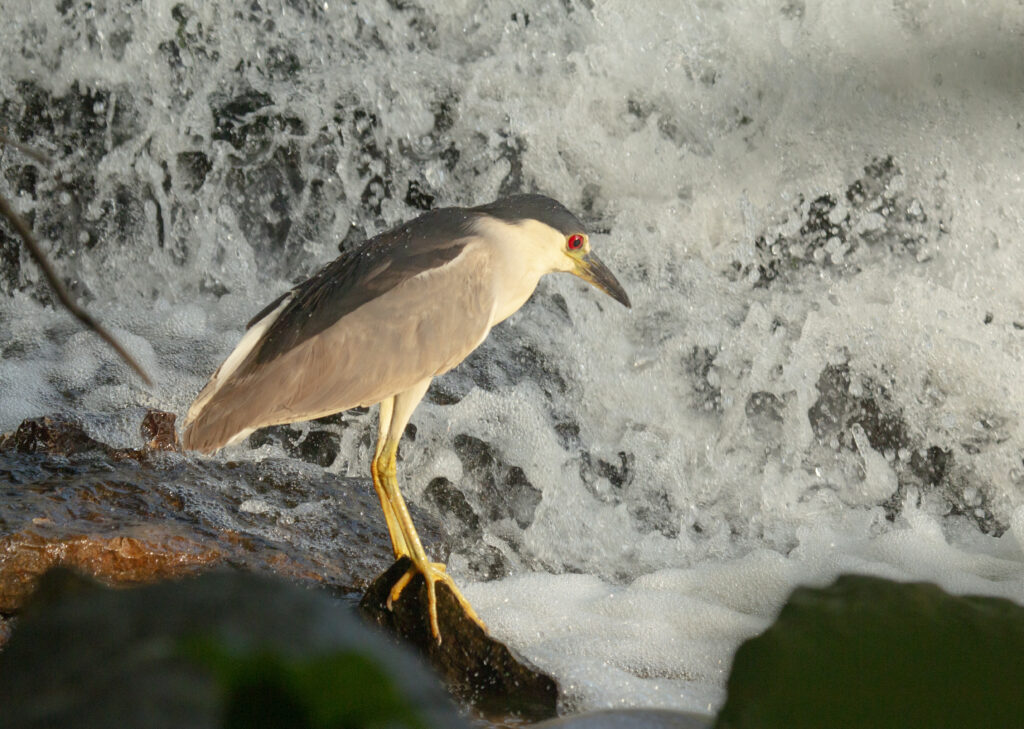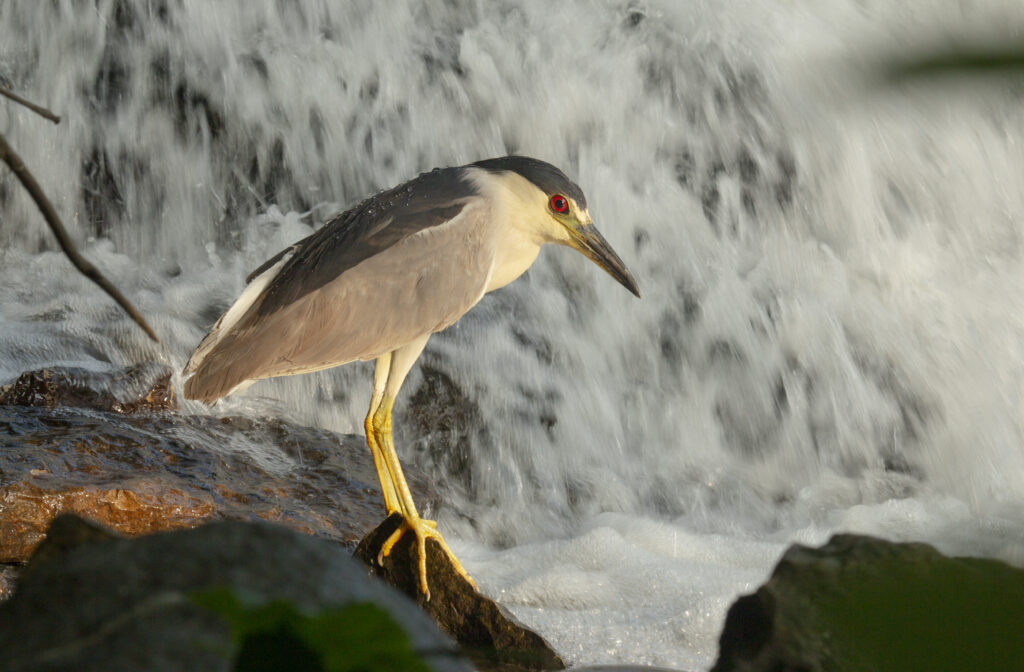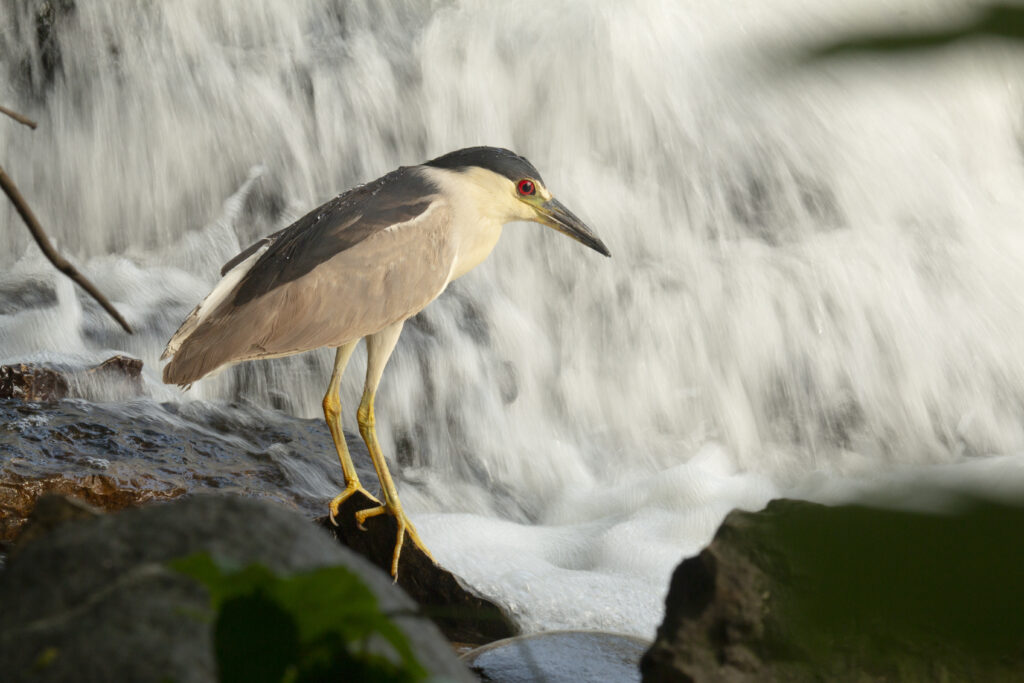Black-Crowned Night Heron at Waterfall
There is a family of three Black-crowned Night Herons at Graue Mill in Hinsdale, IL. The old historic mill sits below a 4 foot dam in the Salt Creek and the Night Herons regularly hunt for food from the rocks at the bottom of the falls caused by the dam. GBP member Birder2011 took advantage of the Night Heron’s position there to experiment with the photographic effects of slow shutter speeds on the water cascading over the dam. The Night Heron often stands very still on the rocks, so slow shutter speeds don’t result in any blur of the bird, but by differing the shutter speeds the camera records different effects of the water behind the bird. The pictures below show a progression from fastest to slowest shutter speed.
Birder2011 took this first photograph with a shutter speed of 1/800th of a second. You can see quite a lot of detail in the water coming over the dam.
Birder2011 used a monopod (one pole attached to the bottom of her camera) to stabilize her camera. In general, I find that I can hold my camera pretty still as low as 1/320th of a second. In this next picture Birder2011 shot at 1/80th of a second so without the monopod it is likely the bird would have been blurred from slight motion while holding the camera. Look at the water again and note that much of the detail has been lost. A lot of water moves in just 1/80th of a second (ten times as much as in the previous picture) and it is recorded by the camera as longer tendrils of water.
The next shot was taken at 1/40th of a second. Most of the water now looks almost like a streaming cloud. Very little detail is seen in the water.
Birder2011’s final shot was taken at 1/30th of a second (for comparison sake our eyes blink at about 1/10th of a second). Luckily the bird remained motionless during the shot, but look at the water! It has a soft dreamy effect. This shot was Birder2011’s favorite pic of the four. The water has such a soft, cloud-like, feel to it whereas the Black-crowned Night Heron remained sharp and crisp.
Birder2011 found the perfect spot and subject to experiment with her camera’s shutter speed. It’s important to note that the use of a monopod or tripod are essential when shooting pics at slow (below 1/320th of a second) shutter speeds. Thanks so much to Birder2011 for sharing all four pictures with us so we could learn from her experiment.
Go Birding. Take Pics. Share Here. Repeat.
Mike
Click Here to learn more about GreatBirdPics. Members can post their own great bird pics, create an online gallery of their works, and regularly receive emails about birds and bird photography.


